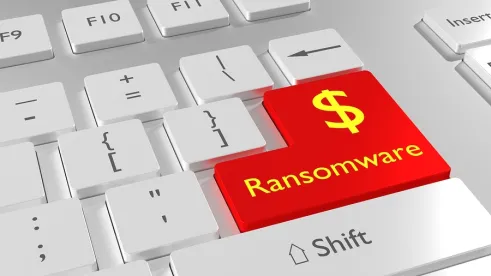The National Institute of Standards and Technology (NIST) recently released a preliminary draft of its Cybersecurity Framework Profile for Ransomware Risk Management. The public comment period for this draft runs through July 9, 2021. NIST says “The profile can be used as a guide to managing the risk of ransomware events. That includes helping to gauge an organization’s level of readiness to counter ransomware threats and to deal with the potential consequences of events.” NIST is taking an iterative approach to this framework and there will be at least one additional public comment period on it.
Protecting Against Ransomware Attacks
The NIST framework recommends the following steps to protect against the ransomware threat:
-
Use antivirus software at all times. Set your software to automatically scan emails and flash drives.
-
Keep computers fully patched. Run scheduled checks to keep everything up-to-date.
-
Block access to ransomware sites. Use security products or services that block access to known ransomware sites.
-
Allow only authorized apps. Configure operating systems or use third-party software to allow only authorized applications on computers.
-
Restrict personally owned devices on work networks.
-
Use standard user accounts versus accounts with administrative privileges whenever possible.
-
Avoid using personal apps—like email, chat, and social media—from work computers.
-
Beware of unknown sources. Don’t open files or click on links from unknown sources unless you first run an antivirus scan or look at links carefully.
Recovering From Ransomware Attacks
In addition, NIST recommends the following steps organizations can take now to help recover from a future ransomware event:
-
Make an incident recovery plan. Develop and implement an incident recovery plan with defined roles and strategies for decision making. This can be part of a continuity of operations plan.
-
Backup and restore. Carefully plan, implement, and test a data backup and restoration strategy—and secure and isolate backups of important data.
-
Keep your contacts. Maintain an up-to-date list of internal and external contacts for ransomware attacks, including law enforcement.
Determining Your Organization’s State of Readiness to Prevent And Mitigate Ransomware Attacks
Organizations can use the NIST framework to profile their state of readiness for ransomware attacks, identifying and prioritizing opportunities for improving their ransomware resistance. NIST identifies the following functions as a further means to address ransomware risks:
-
Identify – Develop an organizational understanding to manage cybersecurity risk to systems, people, assets, data, and capabilities. The activities in the Identify Function are foundational for effective use of the Framework. Understanding the business context, the resources that support critical functions, and the related cybersecurity risks enables an organization to focus and prioritize its efforts, consistent with its risk management strategy and business needs.
-
Protect – Develop and implement appropriate safeguards to ensure delivery of critical services. The Protect Function supports the ability to limit or contain the impact of a potential cybersecurity event.
-
Detect – Develop and implement appropriate activities to identify the occurrence of a cybersecurity event. The Detect Function enables timely discovery of cybersecurity events.
-
Respond – Develop and implement appropriate activities to take action regarding a detected cybersecurity incident. The Respond Function supports the ability to contain the impact of a potential cybersecurity incident.
-
Recover – Develop and implement appropriate activities to maintain plans for resilience and to restore any capabilities or services that were impaired due to a cybersecurity incident. The Recover Function supports timely recovery to normal operations to reduce the impact from a cybersecurity incident.
Ransomware continues to present a significant threat to organizations. The NIST framework presents an opportunity to assess and improve prevention and mitigation measures. Organizations may not be able to prevent all attacks, but it is important to remain vigilant and be aware of emerging trends.
Here are some additional helpful resources for ransomware attack prevention and response:




 />i
/>i

